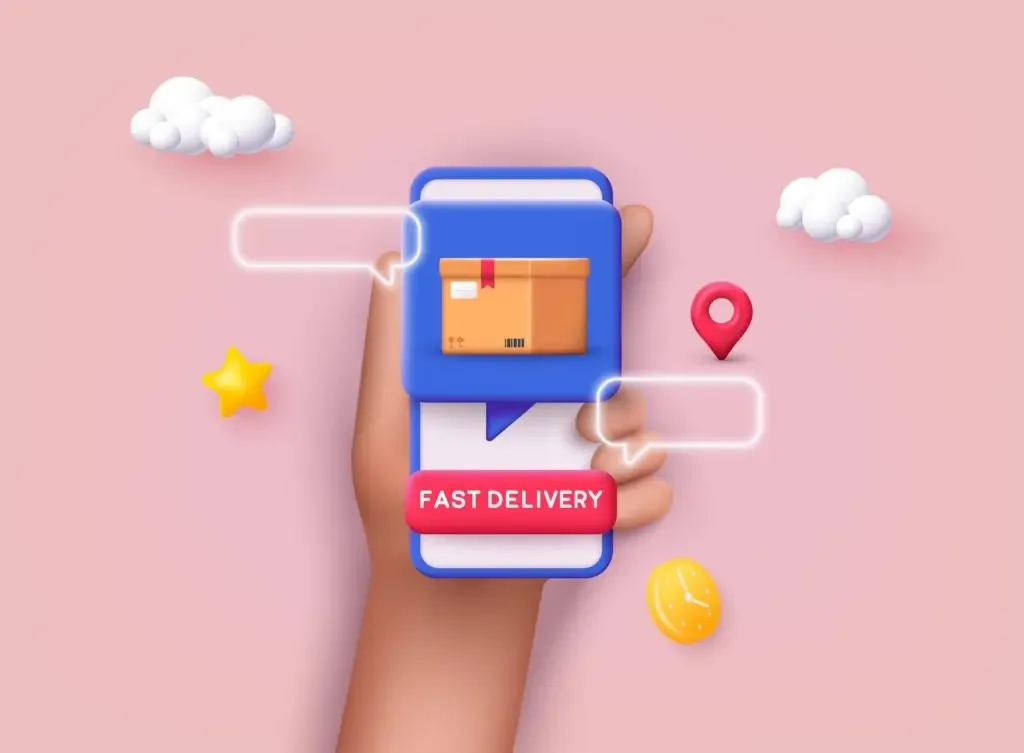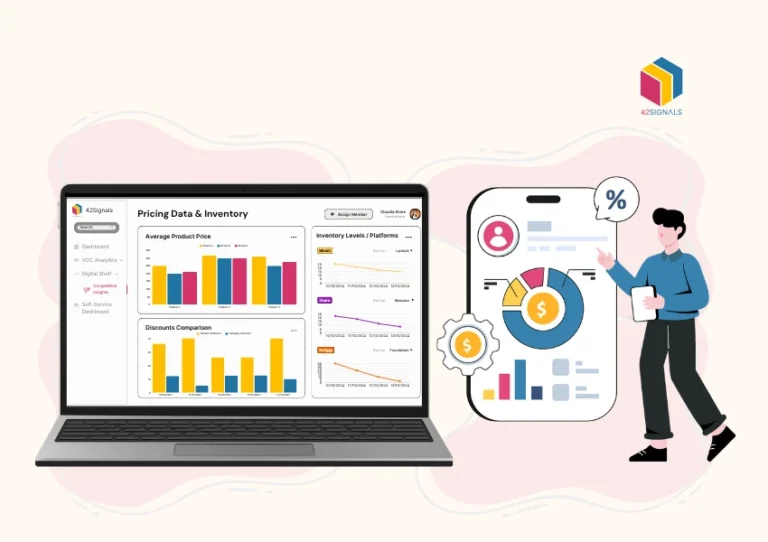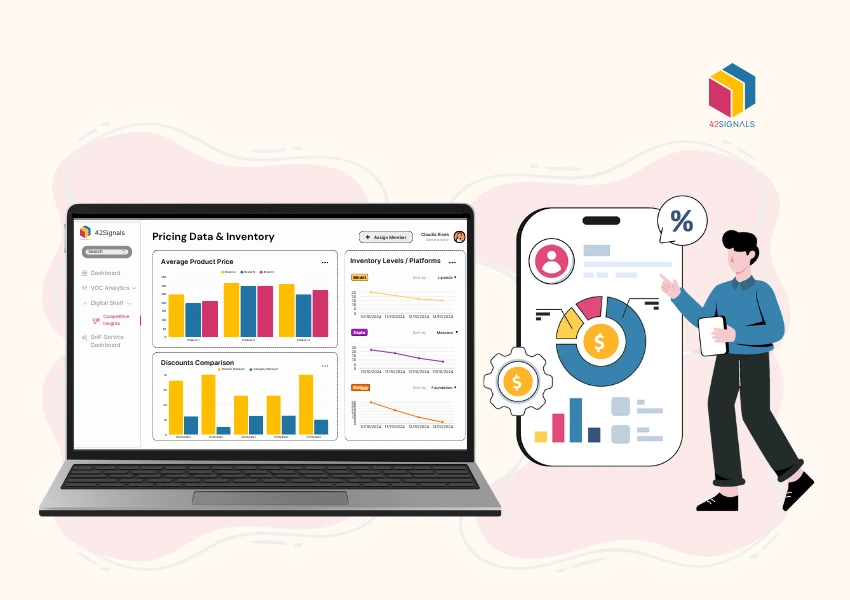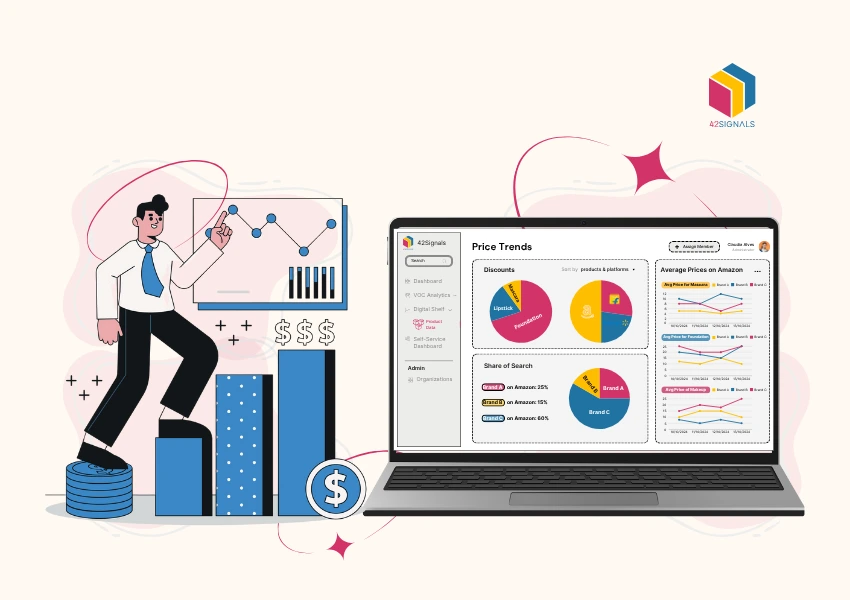Table of Contents
ToggleWhat is Quick Commerce?
Quick commerce or q-commerce is an e-commerce platform that focuses solely on quick deliveries. This means an order is usually delivered within 15-30 minutes or less than an hour.
With customer behavior slowly shifting towards quick shopping and instant deliveries, quick commerce has risen in popularity in big cities.
Let’s see how different strategies can contribute to higher customer satisfaction.
The Quick Commerce Business Model Explained
How the Quick Commerce Engine Works: A Three-Pillar Model
The quick commerce business model relies on a highly efficient, technology-driven system that differs significantly from traditional e-commerce.
- The Operational Backbone: Dark Stores & Micro-Fulfillment Centers
Unlike traditional warehouses on the city outskirts, q-commerce operates a network of “dark stores”—small, hyperlocal warehouses strategically located in dense urban neighborhoods. These stores are not open to the public and are optimized for picking and packing speed, housing ~2,000-3,000 high-demand SKUs. - The Economic Engine: Revenue Streams
- Commission on Sales: A percentage taken from every product sold through the platform.
- Delivery Fees: Charged to the customer for the ultra-fast delivery service.
- Surge Pricing: Higher fees during peak demand periods or adverse weather.
- Brand Partnerships & Advertising: Brands pay for premium placement, promotions, and featured listings within the app.
- Subscription Models: Monthly or annual fees (e.g., “GoPass” on Blinkit, “Zoo Prime” on Zepto) for benefits like free delivery, which boosts customer loyalty and recurring revenue.
- The Workforce: Gig Economy Riders
A fleet of delivery partners (often on bicycles or e-bikes for agility in traffic) is managed via a dynamic dispatching system that assigns the closest available rider to a new order, minimizing wait times.
Key Players and Real-World Examples
Global and Regional Q-Commerce Leaders
- Gorillas (Europe): Pioneered the 10-minute delivery promise in major European cities, though the market has since consolidated.
- Getir (Turkey): A global leader that expanded rapidly, acquiring competitors to consolidate market share.
- Gopuff (USA): Started as a convenience store delivery service and evolved into a major q-commerce player with its own dark stores.
The Indian Q-Commerce Landscape (A High-Growth Market):
- Zepto: Known for its “10-minute delivery” promise and strong execution, becoming a benchmark in the space.
- Blinkit (owned by Zomato): Leveraged its parent company’s existing delivery network to quickly scale its q-commerce operations.
- Swiggy Instamart: Used the vast user base of its food delivery parent, Swiggy, to cross-sell quick commerce groceries.
A Mini-Case Study: How Zepto Makes 10-Minute Delivery Possible
Zepto’s model relies on an extensive network of “dark stores” located within 2-3 kilometers of the customer. Their technology stack does the heavy lifting:
- Geospatial Mapping: Identifies optimal locations for dark stores to maximize coverage of high-density areas.
- AI-Powered Inventory: Stocks each dark store with products that are in high demand in that specific locality.
- Routing Algorithms: Assigns orders to riders and calculates the most efficient route on hyper-local streets.
Strategies to Improve Customer Satisfaction in Quick Commerce
1. Efficient Supply Chain and Inventory Management
- Localized Micro-Warehouses: Utilizing dark stores or micro-fulfillment centers strategically placed across the city allows companies to store high-demand products closer to customers. This reduces delivery time and ensures that popular items are always in stock.
- Demand Forecasting: Leveraging AI and data analytics to predict peak demand and seasonal trends ensures inventory aligns with customer needs, reducing stockouts or delays.
2. Seamless Technology Integration
- User-Friendly Mobile Apps: An intuitive and quick-to-navigate interface helps customers place orders effortlessly. Features like saved preferences, one-click reorder, and real-time tracking enhance the shopping experience.
- Real-Time Tracking: Providing live updates on order status builds trust and allows customers to plan around their delivery.
- AI-Driven Personalization: Recommending products based on user behavior creates a customized experience, increasing satisfaction and repeat purchases.
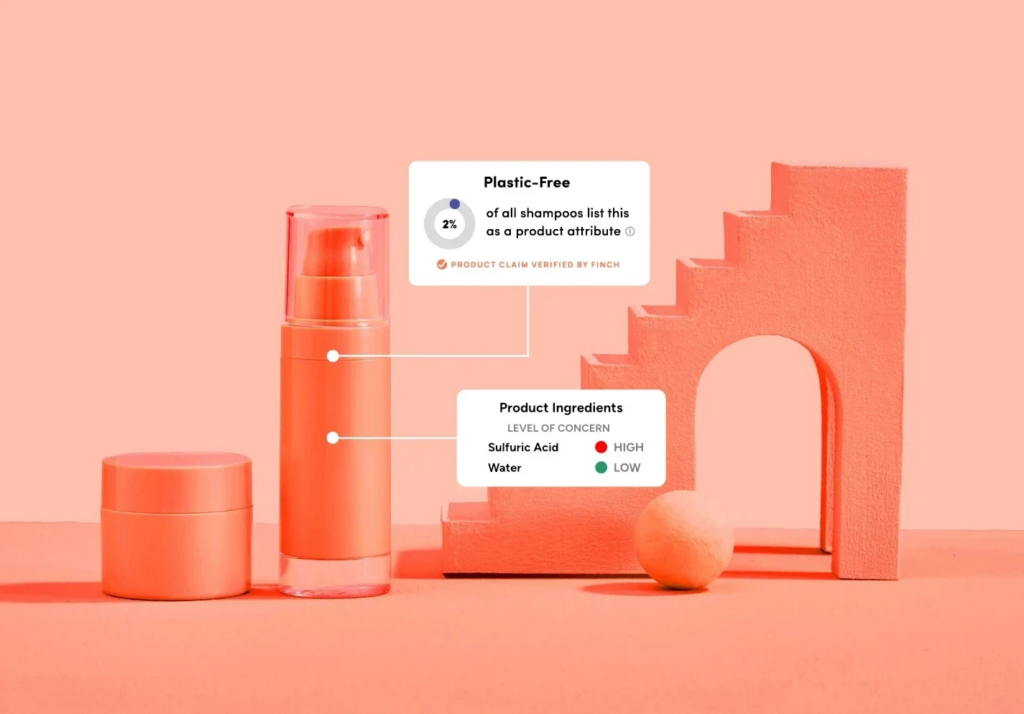
Image Source: Finch
A customer looking to buy a product would significantly benefit from detailed information on the item, looking at an example of a skincare product, having scientifically rigorous product information can help the buyer understand the ingredients not only at a summary level but also knowing its impact on the skin can be tremendously helpful.
3. Optimized Delivery Logistics
- Hyperlocal Delivery Networks: Partnering with local delivery agents or maintaining an in-house fleet ensures timely deliveries. Leveraging route optimization software helps minimize delays.
- Dynamic Dispatching Systems: Using smart dispatch systems to assign orders to the nearest available rider reduces waiting times and ensures efficiency.
- Eco-Friendly Delivery Options: Offering options like bicycle or electric vehicle deliveries can appeal to environmentally conscious consumers.
4. Focus on Product Quality in Quick Commerce
- Secure Packaging: High-quality packaging prevents damage to products during transit, ensuring items arrive in pristine condition.
- Temperature-Controlled Logistics: For perishables or temperature-sensitive items, ensuring they remain fresh is vital for customer trust.
5. Customer Service Excellence
- 24/7 Support Channels: Providing round-the-clock customer service through chatbots, calls, or social media channels ensures timely resolution of queries for quick commerce orders.
- Proactive Communication: Sending proactive updates about delays or order substitutions minimizes frustration.
- Flexible Return Policies: Hassle-free return options encourage customers to trust the platform for future purchases.

Image Source: Shopify
6. Loyalty and Reward Programs
- Subscription Models: Offering perks like free deliveries or exclusive discounts through subscription packages incentivizes customer retention.
- Point-Based Systems: Allowing customers to earn points for each purchase and redeem them for discounts or freebies fosters brand loyalty.
7. Community and Sustainability Initiatives
- Support for Local Brands: Partnering with local vendors or producers can appeal to customers who value community-driven businesses.
- Sustainability Commitments: Using recyclable packaging and reducing carbon footprints demonstrates social responsibility, which resonates with conscious consumers.
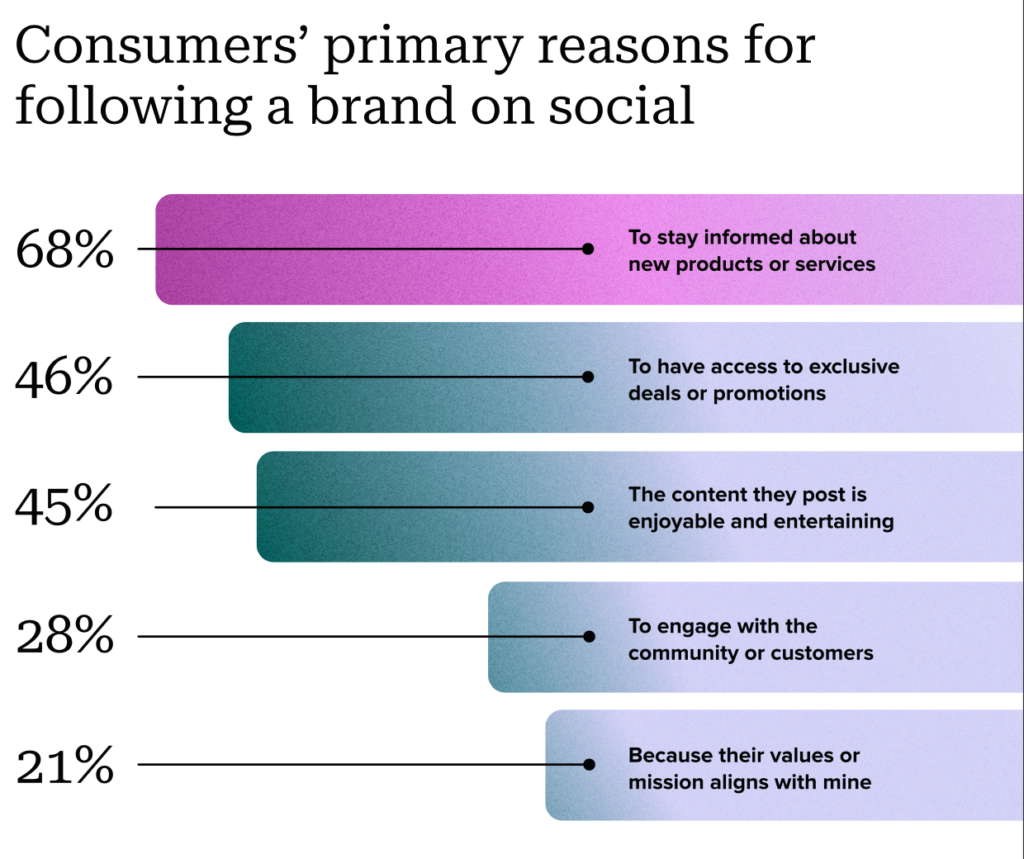
Image Source: LinkedIn
If a user tweets a brand asking for advice on which type of coffee maker to buy, the brand’s prompt response to the tweet suggesting a few models that fit the user’s budget and preferences can make the user into a customer. As you can see 28% of people follow a brand to engage with the community.
8. Marketing and Promotions on Quick Commerce Platforms
- Targeted Campaigns: Tailored marketing strategies based on customer demographics or purchasing patterns can drive engagement and satisfaction in quick commerce.
- Limited-Time Offers: Time-sensitive promotions encourage impulse buying and increased app engagement.
- Referral Incentives: Offering discounts or rewards for referrals helps expand the customer base while retaining existing ones.
9. Continuous Feedback Loop
- Customer Feedback Mechanisms: Actively soliciting feedback through post-purchase surveys or app ratings helps identify areas for improvement.
- Iterative Improvements: Using feedback to continuously refine operations, product offerings, and service quality ensures evolving customer needs are met.

Quick commerce is booming worldwide. A fun and positive shopping experience on quick commerce applications can change customer behavior making them loyal shoppers.
E-commerce insights on product availability and understanding what items are selling faster can help avoid stockouts and improve customer experience.
If you would like to know more about e-commerce analytics, schedule a demo with us today.
The Technology Stack: Software and Data Intelligence
The Digital Brain of Quick Commerce
The promise of 10-30 minute delivery is impossible without a sophisticated technology stack.
- AI & Machine Learning for Demand Forecasting: Algorithms analyze historical data, weather, time of day, and local events to predict what products will be in demand, ensuring dark stores are stocked correctly to prevent stockouts.
- Dynamic Routing & Dispatch Software: This is the core logistics engine. It processes order details, real-time traffic data, and rider locations to assign the optimal delivery executive and calculate the fastest route.
- Price Monitoring & Competitive Intelligence: Tools like 42Signals are crucial for q-commerce players and brands. They allow for:
- Real-time Price Tracking: Monitor competitor pricing on thousands of SKUs to inform your own pricing strategy and promotions.
- Stock-Out Alerts: Get instant notifications when a competitor runs out of a key product, allowing you to capture the unmet demand.
- Assortment Analysis: Understand which products your competitors are listing and how their assortment changes.
- Data Intelligence Services: Providers specialize in scraping and aggregating data from q-commerce platforms to offer insights on market share, sales trends, and consumer behavior, which is vital for strategic decision-making.
Marketing, Advertising, and Customer Acquisition
Winning the Customer in a Hyper-Competitive Market
Customer acquisition costs are high in q-commerce, making effective marketing essential.
For Q-Commerce Platforms (like Zepto, Blinkit):
- Performance Marketing: Heavy investment in paid search (
quick commerce ads) and social media ads targeting users in specific, serviceable zip codes. - Referral Programs: Incentivize existing users to bring in new ones with cashback or discount coupons.
- App Store Optimization (ASO): Crucial for being discovered when users search for “quick grocery delivery” or “10-minute delivery.”
- Retention Marketing:
- Push Notifications: Alert users about flash sales, new product arrivals, and cart abandonment.
- Personalized Offers: Use data to send targeted discounts on a user’s frequently purchased items.
- Loyalty Programs: Subscription models are the ultimate retention tool, locking in frequent customers.
For Brands Selling on Q-Commerce Platforms:
- Platform Advertising: Purchase sponsored listings and banner ads within the q-commerce app itself to increase visibility.
- Digital Shelf Optimization: Ensure your product listings have high-quality images, compelling titles, and complete information to win the “first click” and drive conversion.
- Promotions: Run limited-time offers (
instant ecommerce deals) to spur trial and impulse buys.
Why Q-Commerce Thrives in Big Cities
Urban areas with dense populations and high mobile penetration are ideal for q-commerce. Factors such as traffic congestion, the need for convenience, and a growing preference for digital solutions make q-commerce platforms indispensable for city dwellers.
Furthermore, the cultural shift towards instant gratification aligns perfectly with the promise of ultra-fast delivery.
Challenges and the Future of Quick Commerce
Navigating the Roadblocks and Future Trends
Despite its growth, the q-commerce model faces significant challenges:
- Profitability: The high costs of operating dark stores and managing a delivery fleet make profitability elusive for many players. Consolidation is a key trend.
- Logistical Complexity: Managing last-mile delivery in congested cities is inherently difficult and expensive.
- Customer Expectations: The bar for speed and reliability is set extremely high; any failure can lead to immediate customer churn.
Future Trends:
- Expansion into New Categories: Beyond groceries, q-commerce is expanding into electronics, beauty, pharmaceuticals, and fashion.
- Advanced Automation: The use of robotics in dark stores for picking and packing is on the horizon to increase speed and reduce labor costs.
- Sustainability Focus: A growing trend towards using electric vehicles and recyclable packaging to appeal to the eco-conscious consumer.
Frequently Asked Questions
What is a quick commerce channel?
A quick commerce channel refers to a type of e-commerce model that focuses on delivering products to customers in the shortest time possible, often within minutes or hours.
This is achieved through the use of advanced technology such as artificial intelligence and machine learning for inventory management, order processing, and real-time tracking.
Additionally, these channels typically have a network of local fulfillment centers or dark stores located close to high population density areas, which enables faster delivery times compared to traditional e-commerce models.
Quick commerce channels cater primarily to essential items like groceries, household supplies, personal care products, and meals from restaurants. The goal of these channels is to provide convenience and instant gratification to consumers who want their orders fulfilled quickly and efficiently without having to leave their homes or offices.
What is the difference between Q-commerce and ecommerce?
E-commerce (Electronic Commerce):
Definition: E-commerce refers to the buying and selling of goods or services over the Internet. It encompasses a wide range of online transactions, including retail sales, digital downloads, subscriptions, and more.
Channels: E-commerce operates primarily through websites, mobile apps, and online marketplaces.
Examples: Online retail stores like Amazon, eBay, and Shopify fall under the e-commerce umbrella.
Payment Methods: E-commerce platforms accept various payment methods, such as credit cards, digital wallets, and bank transfers.
Delivery: Products are typically shipped to the customer’s address.
Business Models: B2C (Business-to-Consumer), B2B (Business-to-Business), and C2C (Consumer-to-Consumer) models are common in e-commerce.
Q-commerce (Quick Commerce):
Definition: Q-commerce is an evolution of e-commerce that focuses on ultra-fast delivery of goods. It aims to provide near-instantaneous delivery, often within minutes.
Speed: Q-commerce platforms prioritize speed and convenience. They leverage local micro-fulfillment centers and couriers to achieve rapid delivery.
Product Range: Q-commerce typically offers a limited selection of essential items, such as groceries, pharmaceuticals, and convenience goods.
Examples: Grocery delivery services like Instacart, food delivery platforms like Uber Eats, and on-demand convenience stores fall into the Q-commerce category.
Business Model: Q-commerce relies on hyper-local logistics and real-time inventory management.
Customer Expectations: Customers expect lightning-fast delivery, often within an hour or less.
